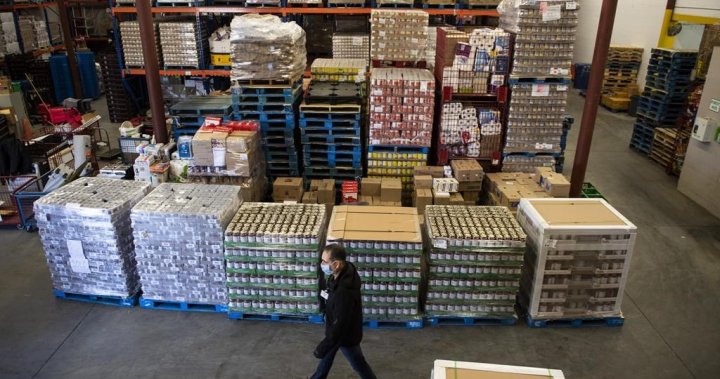The Ottawa Food Bank, a central hub for food distribution to various programs within its network, has announced a significant reduction in the amount of food it will provide, citing escalating operational costs and a surge in demand for its services. This development raises serious concerns about food security within the Ottawa community, particularly for those who rely on food banks for their sustenance. The cuts, ranging from 20% to 50% of previous allocations, will impact 98 programs that depend on the Ottawa Food Bank’s resources.
Rachael Wilson, CEO of the Ottawa Food Bank, explained that the decision was driven by the increasing cost of food acquisition, which has hindered the organization’s ability to maintain its previous purchasing levels. This financial constraint has forced the food bank to make difficult choices, despite the stark reality of escalating demand. Paradoxically, while the cost of purchasing food has risen, the need for food assistance has also reached unprecedented levels in Ottawa. The number of visits to the food bank has skyrocketed by over 90% since 2019, painting a grim picture of the growing food insecurity within the city.
The convergence of rising operational costs and increased demand presents a formidable challenge for the Ottawa Food Bank and its network of affiliated programs. The reduction in food distribution will undoubtedly strain the capacity of these programs to meet the needs of their clients. This situation is further exacerbated by pre-existing capacity issues within the network. In the previous year, a worrying 40% of the food banks within the Ottawa Food Bank’s network reported having to turn people away on a weekly basis due to limitations in their resources. This situation underscores the urgent need for increased support and funding for food banks to ensure they can adequately address the growing demand for food assistance.
The Ottawa Food Bank plays a crucial role in the city’s food security landscape, distributing over 4.4 million kilograms of food annually from its Bantree Street warehouse. This volume of food supports an estimated 556,000 visits for food assistance each year. The scale of these operations highlights the significant impact of the announced reductions, potentially affecting hundreds of thousands of individuals and families who rely on the food bank’s services. The decision underscores the precarious position of many vulnerable individuals and families in Ottawa, facing the double burden of escalating food prices and limited access to essential food resources.
The implications of the Ottawa Food Bank’s decision extend beyond the immediate impact on the individuals and families who directly benefit from its services. Reduced food distribution will likely place increased pressure on other social support systems within the community, potentially leading to a ripple effect of increased demand for other forms of assistance. The strain on these systems could further exacerbate existing social and economic disparities within the city. Addressing this complex issue requires a multifaceted approach that involves not only increased funding for food banks but also strategies to address the root causes of food insecurity, such as poverty, unemployment, and lack of access to affordable housing.
The situation facing the Ottawa Food Bank serves as a stark reminder of the growing challenge of food insecurity in Canadian cities. The confluence of rising food prices, increasing demand, and constrained resources necessitates a coordinated response from various stakeholders, including government agencies, non-profit organizations, and community members. Long-term solutions require a systemic approach that tackles the underlying causes of food insecurity while also providing adequate support to organizations like the Ottawa Food Bank, which play a critical role in ensuring that vulnerable individuals and families have access to the essential nourishment they need.

